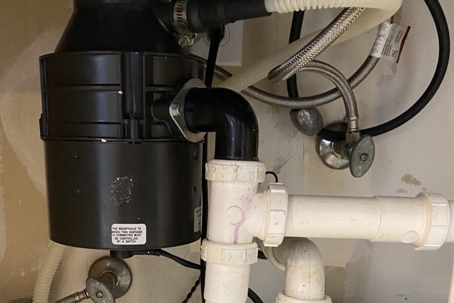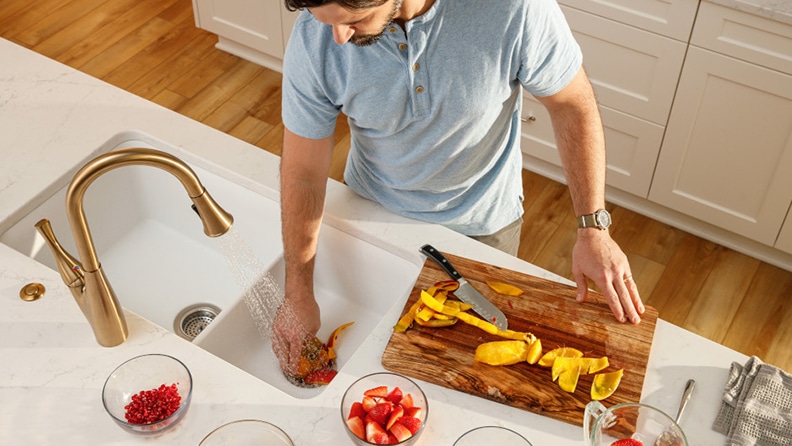Confirmed Ways to Fix a Leaking Waste Disposal Unit
Confirmed Ways to Fix a Leaking Waste Disposal Unit
Blog Article
We've unearthed the article about Why Is My Garbage Disposal Leaking From the Bottom? down the page on the web and decided it made sense to relate it with you on this page.

Garbage disposals are important kitchen appliances that aid in taking care of food waste successfully. Nevertheless, a dripping waste disposal unit can be a discouraging and unpleasant trouble to deal with. Thankfully, numerous leaks can be taken care of conveniently with a couple of straightforward actions. In this short article, we will go over how to take care of a dripping garbage disposal successfully.
Introduction
Garbage disposals are mounted under kitchen area sinks and are designed to shred food waste into smaller items, permitting it to travel through the pipes system easily. While these gadgets are typically dependable, leakages can occur gradually because of deterioration, loosened connections, or damage to the device.
Common Sources Of Leakages in Garbage Disposals
Worn Seals and Gaskets
Seals and gaskets play a critical role in avoiding water from dripping out of the garbage disposal. In time, these elements can wear away, bring about leakages around the disposal device.
Loose Links
The connections between the waste disposal unit and the plumbing system can end up being loosened gradually, triggering water to leak out during procedure.
Splits or Holes in the Disposal Unit
Physical damages to the waste disposal unit, such as splits or openings in the real estate, can also lead to leakages.
Recognizing the Resource of the Leakage
Prior to trying to take care of a dripping waste disposal unit, it is essential to identify the source of the leak. This can generally be done with aesthetic evaluation or by conducting basic tests.
Visual Assessment
Examine the garbage disposal device meticulously for any kind of signs of water leak. Pay attention to locations around seals, gaskets, and connection factors.
Checking for Leaks
One method to test for leakages is by running water through the disposal system and checking for any type of noticeable indicators of leakage.
Tools and Products Needed for Repairing a Dripping Garbage Disposal
Before starting the repair work procedure, collect the necessary devices and materials, including a screwdriver, adjustable wrench, plumber's putty, replacement seals or gaskets, and epoxy or patching material for fixing cracks or holes.
Step-by-Step Guide to Taking Care Of a Leaking Garbage Disposal
Turn Off the Power
Prior to trying any type of repair services, make certain that the power to the waste disposal unit device is switched off to stop the risk of electric shock.
Locate the Leakage
Recognize the precise place of the leak and determine the reason.
Tighten Links
Utilize a wrench to tighten any kind of loosened connections in between the disposal system and the plumbing system.
Change Seals or Gaskets
If the leak is due to used seals or gaskets, remove the old elements and change them with brand-new ones.
Patching Splits or Openings
For splits or holes in the disposal device, usage epoxy or an appropriate patching material to secure the damaged area.
Testing the Garbage Disposal After Fixing
When the repair is total, test the waste disposal unit by running water via it to guarantee that the leakage has been solved.
Preventive Maintenance Tips to Avoid Future Leakages
To stop future leakages, it is important to execute normal maintenance on your garbage disposal. This includes keeping it tidy, avoiding putting non-food items or hard objects down the disposal, and regularly checking for leaks or other issues.
Conclusion
In conclusion, dealing with a dripping waste disposal unit is a fairly simple process that can be completed with standard devices and materials. By following the steps described in this article and exercising preventative maintenance, you can maintain your waste disposal unit in good working condition and avoid pricey fixings in the future.
What to Do About a Leaking Garbage Disposal
A leaking garbage disposal often goes unnoticed until you confront a sopping cabinet, a foul-smelling puddle, or an audible drip-drip-drip from the unit. The fix can be frustrating, too, because the leak can stem from a number of components in the system. Fortunately, with a little sleuthing, you can zero in on the leak and—depending on the exact location—stop the icky oozing and repair the component that caused it. Worst case scenario, if it turns out that the garbage disposal must be replaced, installing a new one is a reasonable do-it-yourself task for those with basic plumbing skills. Read on to keep the cash you’d otherwise hand over to a pro.
Prepare to find the leak
Prior to testing the garbage disposal for leaks, unplug it at the wall outlet and turn off the power from the breaker box to prevent electrical shock. Then insert a watertight sink stopper into your sink drain and wipe the unit dry with a clean cloth. In any handy container, mix a few drops of food coloring into a few cups of water, and pour the dyed water onto the sink stopper to help you locate the leak.
Investigate the source
the top, where the disposal meets the sink drain the side, where the dishwasher hose or main drain pipe connects to the disposal or the bottom of the unit Inspect each of these locations while gliding a light-colored rag over the unit; the dyed water will readily show on the rag and reveal the location of the leak. If a leak isn’t immediately apparent, remove the sink stopper and pour a few more cups of dyed water down the sink drain, then check for leaks again. Leaks near the top of the unit are more likely to show themselves while the sink is plugged, while side and bottom leaks are more noticeable while the sink is unplugged.
The metal sink flange that sits directly inside the sink drain is typically sealed around the top with plumber’s putty (a clay-like sealant) and then secured from under the sink with bolts. If the plumber’s putty deteriorates, or the bolts loosen, the flange can no longer form a watertight seal between the sink drain and the disposal—which could cause a leak at the top of the unit.
To reseal the leaky flange, you must first detach the garbage disposal. Start by loosening the screws securing the main drain pipe to the disposal, then loosen the screws in the metal clamp securing the dishwasher hose to the disposal and detach the drain pipe and dishwasher hose from the disposal. Loosen the screws in the mounting ring that connects the disposal to the metal mounting assembly beneath the sink, then pull down the disposal and carefully set it on a clean, dry surface. Loosen the bolts in the mounting assembly with a wrench, then pull down the mounting assembly and set it near the disposal.

I am very intrigued by The Handy Guide To Fixing Your Garbage Disposal Leaking and I hope you enjoyed reading my blog entry. Do you know about another person who is occupied with the subject? Please feel free to promote it. Many thanks for taking the time to read it.
Book Service Now Report this page